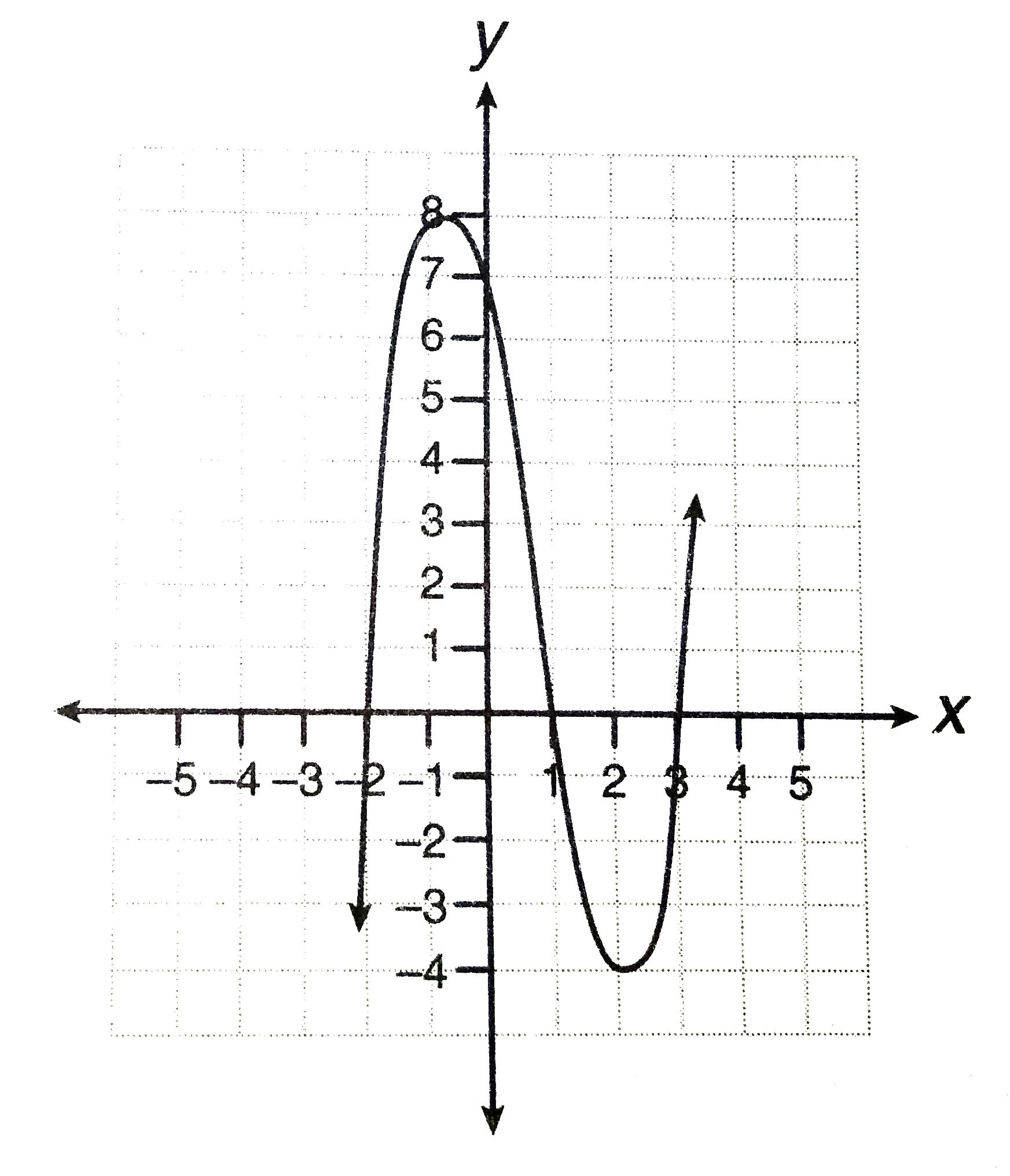which of the following lines are asymptotes for the graph of y=3x2−13x−10x2−4x−5 ?
I. x=-1
II. x=5
III. Y=3
I only
II only
I and II
I and III
The correct Answer is:D
Factor the numerator and denominator: (3x+2)(x−5)(x+1)(x−5), Since the x-5 divide out, the only vertical asymptote is at x=-1. Since the degree of the numerator and denominator are equal, y approaches 3 as x approaches±∞, so y=3 is a horizontal asymptote. [9]
Topper's Solved these Questions
Similar Questions
Which of the following options is not the asymptote of the curve 3x3+2x2y−7xy2+2y3−14xy+7y2+4x+5y=0?
View SolutionIf X={(1,2,3,4,5}andY={1,3,5,7,9}, then find which of the following sets are functions from X to Y?
(i) R1={(x,y):y=x+2,x∈X,y∈Y}
(ii) R2={(1,2),(2,1),(3,3),(4,3),(5,3)}
(iii)R3={(1,1),(1,3),(3,5),(3,7),(5,7)}
(iv) R4={(1,3),(2,5),(4,7),(5,9),(3,1)}
View Solution
Knowledge Check
Which of the following lins are asymptotes of the graph of y=xx+1?
I. x=1
II. x=−1
III. y=1AI onlyBII onlyCIII onlyDII and IIIWhich of the following are the equations of lines that are asymptotes of the graph of y=x2−64(3x+4)(x−5) ?
I. x=−8
II. X = 5
III. y=13AI onlyBII onlyCI and II onlyDII and III onlyf(x)=2x+1 and g(x)=x3−x2+2.At which of the points given by the options below do the graphs of the two function intersect ?
I. (x,y) = (-1,2)
II. (x,y) = (0,2)
III (x,y) = (1,3) .AOnly IBOnly IICOnly IIIDBoth I and II
On comparing the ratios a1a2,b1b2and c1c2, find out whether the following pair of linear equations are consistent, or inconsistent. (i) 3x+2y=5;2x−3y=7(ii) 2x−3y=8;4x−y=9(iii) 32x+53y=7;9x−10y=14(iv) 5x−3y=11;−10x+6y=−22(v) 43x+2y=8;2x+3y=12
View SolutionFind each of the following products:
(i) (x+3)(x−3) (ii) (2x+5)(2x−5) (ii) (8+x)(8−x)
(iv) (7x+11y)(7x−11y) (v) (5x2+34y2)(5x2−34y2) (vi) (4x5−5y3)(4x5+5y3)
(vii) (x+1x)(x−1x) (viii) (1x+1y)(1x−1y) (ix) (2a+3b)(2a−3b)
View SolutionFind each of the following products:
(i) (4x + 5y) (4x - 5y) (ii) (3x2+2y2)(3x2−2y2)
View SolutionSolve the following simultaneous equations :
(i) x+y=7, x-y=5
(ii) x+y=10, x-y=16.
(iii) 3x+y=14, x-y=2.
View Solution
Which equation(s) represent(s) the graph above?
I. y=(x+2)(x2−4x−12)
II. y=(x−3)(x2+x−2)
III. y=(x−1)(x2−5x−6)
View Solution
